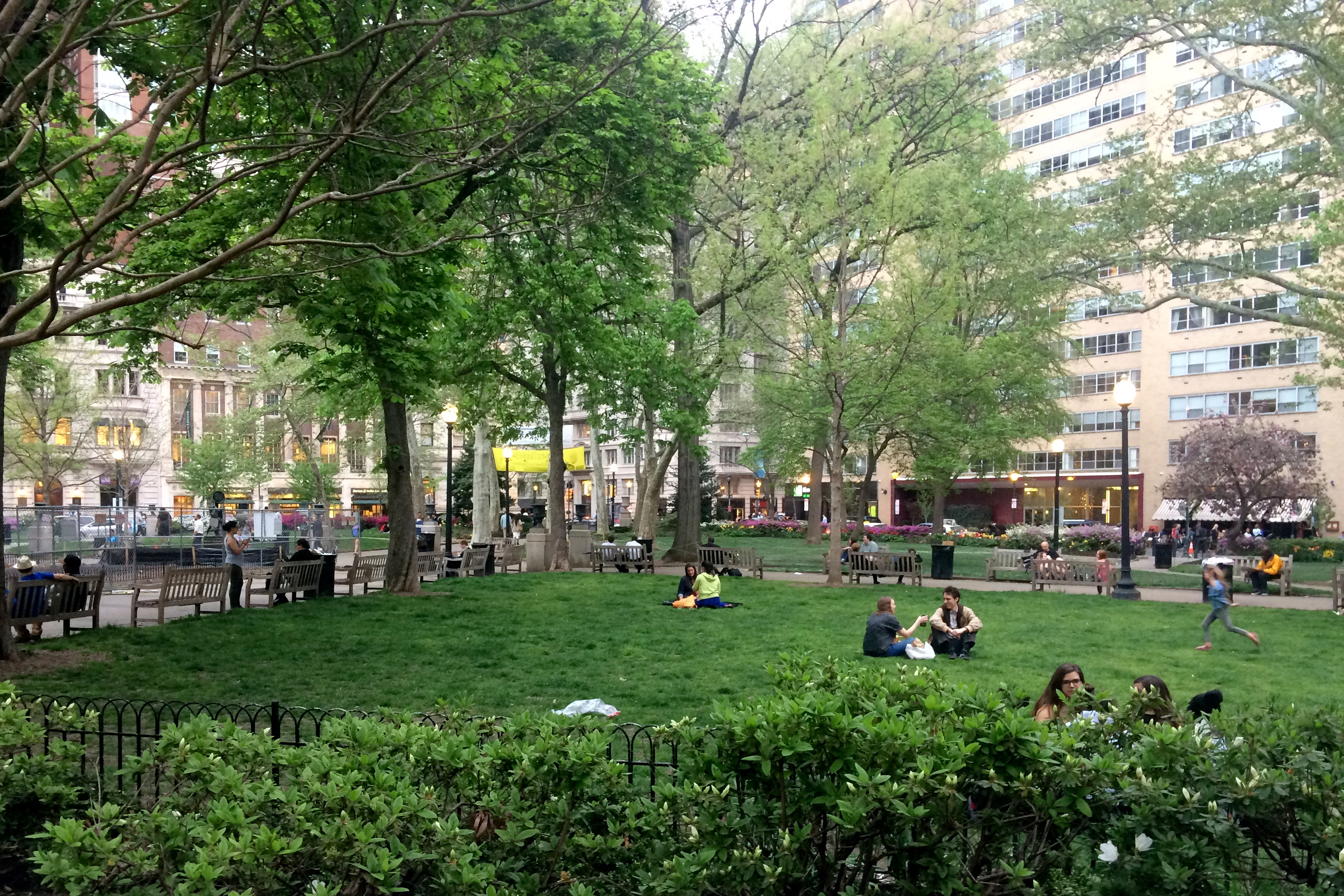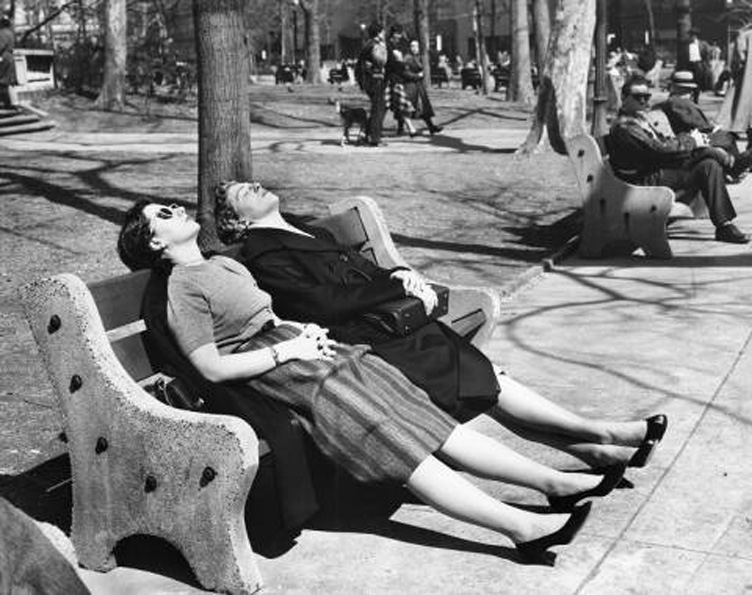On Rittenhouse Square: Perfect from then on

In celebration of what would have been Jane Jacobs’ 100th birthday on May 4, we’re taking a look at these four parks, past, present and future. What has remained the same, what has changed, and what is next for these spaces? We will also explore them in person in a pair of walks happening on Sunday, May 8th as part of this year’s Jane’s Walk weekend.
“The best known of Penn’s four squares is Rittenhouse Square, a beloved, successful, much-used park, one of Philadelphia’s greatest assets today, the center of a fashionable neighborhood—indeed, the only old neighborhood in Philadelphia which is spontaneously rehabilitating its edges and extending its real estate values.”
The largest change since Jane Jacobs wrote those words in 1961 has nothing to do with still beloved and fashionable Rittenhouse Square. More than just one neighborhood in Philadelphia is spontaneously rehabilitating their edges and extending their values. Rittenhouse, the park and the its eponymous neighborhood, has changed the least of Philadelphia’s four squares. To the extent Rittenhouse has changed—perhaps tweaked is a better word— it has evolved in line with Jacobs’ prescriptions for an intelligently designed neighborhood park surrounded by an extraordinary mix of residences, offices and cultural institutions.
By 1913, stately mansions surrounded the park, and their fabulously wealthy residents paid Paul Phillipe Cret to redesign Rittenhouse Square in the fashion of the finest French gardens. His beaux-arts design is the park we know today.
By the time Jacobs wrote “The Death and Life of Great American Cities”, Rittenhouse Square, like the city surrounding it, was at an ebb. Post-war socioeconomic tides drove a residential exodus to suburbia, plunging Philadelphia into a decades-long decline. Jacobs praised Rittenhouse at its lowest point, according to Nancy Heinzen, author of “The Perfect Square: A History of Rittenhouse Square” and board member of Friends of Rittenhouse Square.
At the time, the newly formed Center City Residents Association had recently fought off plans to build a parking garage under the square, which would have cemented the neighborhood as an exclusively commercial district. Jacobs’ beloved diversity of uses was preserved, and the neighborhood surrounding Rittenhouse rebounded.
In the ensuing years, more of the nearby vacant lots would give way to new apartments and hotels. Along 18th Street, sidewalk cafes opened onto the square. Some of the old upper crust’s town homes were converted into retail storefronts, their Gilded Age grandiosity preserved today.
But many of the square’s sprawling mansions went unsaved, replaced by new modernist apartments like the Claridge and the Savoy. Jacobs did not cry for the lost manses, however, arguing instead that good neighborhood parks must feel enclosed by the city around it and that densely populated neighborhoods sustain parks (and themselves) better than sparsely populated ones. A negative corollary to that, though, was that parks must have sun. The tall apartments on Rittenhouse’s southern edge drape chilly shadows across a third of the square; its only “misfortune.”
In addition to sun and enclosure, Rittenhouse enjoys Jacobs’ other two critical design elements for successful neighborhood parks: intricacy and centering. Suffice it to say that Cret’s design provides both in spades.
The neighborhood surrounding the square only improved after Jacobs wrote her masterpiece: The diversity of uses remained, the nearby streets grew denser and more vibrant.
Little changed in the park itself these last 55 years. Teak replaced cheaper wood on the benches; the guardhouse, a replica of those that stood sentry during the 1876 Centennial, was added; Paul Cret’s original mural of Neptune’s Garden, replaced by dull tiles in 1914, was restored in 1999. Rittenhouse Square, the neighborhood, took responsibility of Rittenhouse Square, the park, raising hundreds of thousands annually for its upkeep.
Unlike the other three squares, Rittenhouse was never forsaken. A plan to cut a street through its northwest corner was defeated by the CCRA in 1954; No nearby residents were there to save Washington Square’s own northwest edge from a that fate a few years prior, let alone prevent Logan Square’s circular conversion or trimming down Franklin Square to accommodate bridge traffic. Through planning and happenstance, Philadelphia abandoned the other squares in a way it never did for Rittenhouse. And so it remains much the same today as the day Jacobs was born, a “greatly loved park,” the perfect place to take in the ballet of city life.
WHYY is your source for fact-based, in-depth journalism and information. As a nonprofit organization, we rely on financial support from readers like you. Please give today.




![In Rittenhouse Square | Historical Society of Pennsylvania, Philadelphia Record Photograph Morgue Rittenhouse Square--1915, 1929-44
Record Number: 1086
Collection: Philadelphia Record Photograph Morgue [V07], Folder Number: 3317
Reproduction restrictions: Unknown
Depicts: Rittenhouse Square (Philadelphia, Pa.)
Assorted photographs of Rittenhouse Square, predominately from the 1930s and 1940s.](/wp-content/uploads/planphilly/assets_12/in-rittenhouse-square-historical-society-of-pennsylvania-philadelphia-record-photograph-morgue.original.png)
